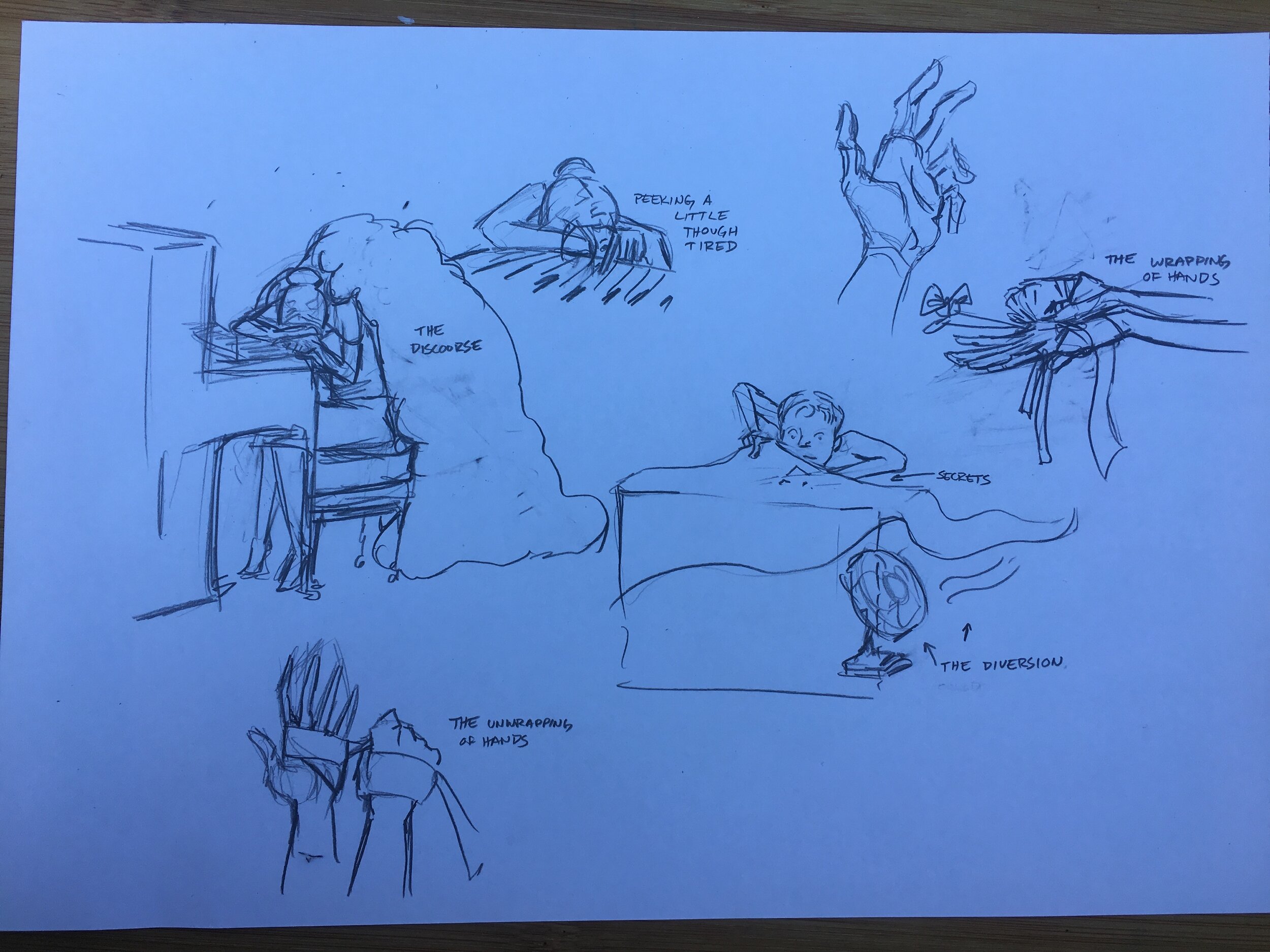Feldenkrais
Movement; organisation; function. Habitual and automatic forms of movement in response to notation - are they a use or a hindrance? Do they allow me better control or less control? Practising Feldenkrais provides me with an awareness of these habits, revealing a gap between my body and mind; my unconscious and conscious. How can I access a process that was established through habit many movements ago?
Technique
Sound production; gesture; embodiment. Do I embody the sound I produce? Does this embodiment enhance the sound I’m producing, or does it distract a listener from my ‘poor’ sound production? An attempt to define this distinction creates further questions: Is embodiment a fundamental feature of sound production? Does embodiment have to be visible? Is embodiment gendered? Is embodiment physically ‘healthy’ ? Is embodiment a waste of energy? Is embodiment unique to each individual….?
Collaboration
Material; meaning; one’s history:
James Redelinghuys (gender; historic convention; practiSe!)
Neil Luck (sound +/- visual; interstitial movement; inverse gesture)
Monica Pearce (‘tiny’ technique; restrain and release; etudes)
Ed Cooper - liminality; states of in-between; meditation; attention diary
Mark Dyer - playing a memory; metaphor; isolating touch
Federico Pozzer - Movement and breath; ‘breath of fire’; hand expansions
Federico Pozzer
I have been working with Federico since 2019. His focus on the breath as musical material has allowed me to explore a less practised aspect of my playing. As collaborators, we use the breath to reveal how easy I find something to do:
“We change our breathing when we hesitate, become interested, startled, afraid, doubtful, make an effort, or try to do something.” (Feldenkrais, 1972)
How may we manipulate the breath?
Is this manipulation within or outside of my conscious awareness?
What effect would this have on my movements, my functioning, and my sound?
What effect would this have on our composition?
Moving Objects (2020) for pianist explores the bodily adaption and functioning required in a series of indeterminate tasks. Organised into three sections, these tasks require the breath as blowing which moves ping pong balls and marbles inside the piano. The intensity of these tasks vary, producing changes in the movements and the sound.
Breathing, Moving, Playing (2020) for pianist involves a series of chords repeated 8 times. Each repetition uses a different breath control that pushes the pianist to the limit of her lung capacity. The breaths fits with the pianist’s movements across the keys, removing her decision of when to play.
Our recent collaboration explored breath and movement using methods that are similar to a Kundalini yoga practice. One, Two, Three, or Four Sequences (2021-22) requires the pianist to carry out repetitive movements in different areas of the body - elbows, wrists, left shoulder blade - and follow specific breath work whilst repeating chords. This piece was premiered at KM28 (Berlin) September 2022.
Ray Evanoff
My work with Ray spans over a decade: his composition has expanded my understanding of technique, movement and sound production. Together, conversation as collaboration has allowed us to create rigorously and infinitely. The music we create embodies survival, adaptation and learning; it expands outside of a finished product and instead is an attitude that forever accompanies our intended practice(s). We discuss our work in Give: Transatlantic Collaboration Through Conversation.

